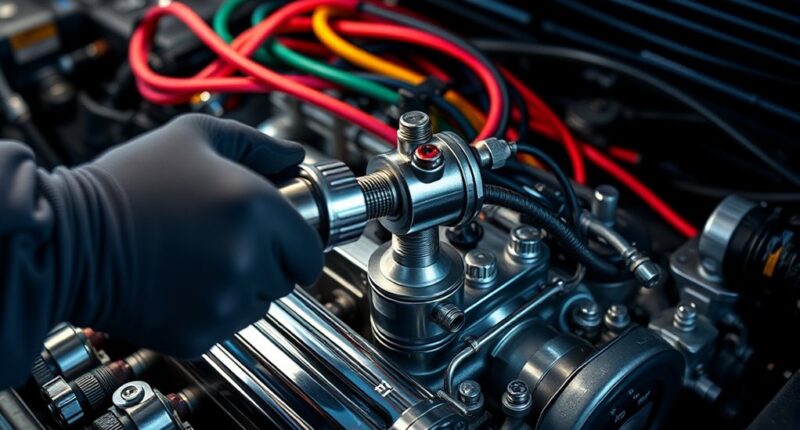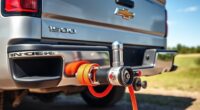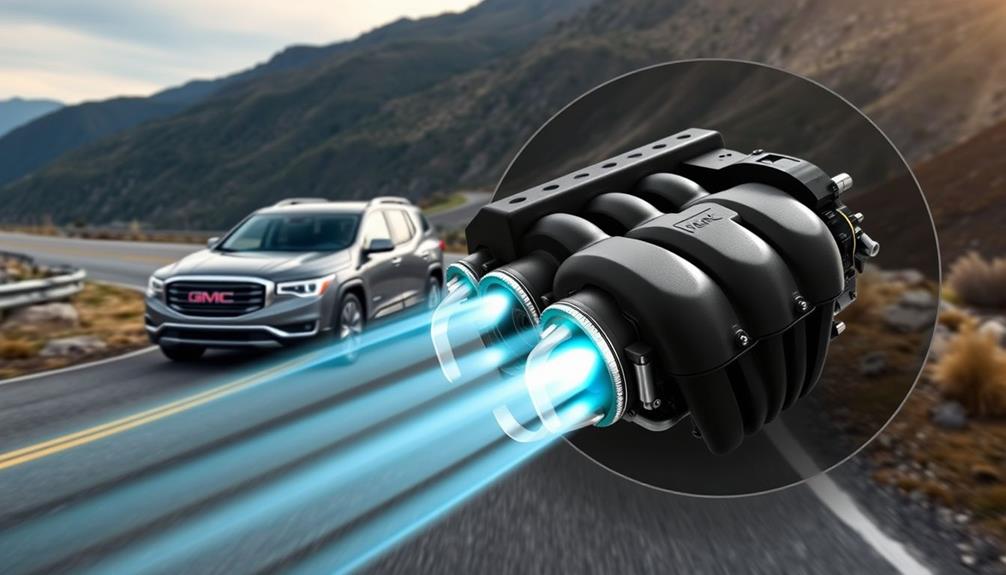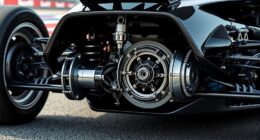To tune cylinder deactivation (DOD) properly, start by adjusting the ECU settings to set appropriate activation thresholds, focusing on low load and steady conditions. Fine-tune the variable camshaft timing to guarantee smooth transitions and minimize vibrations during mode changes. Coordinate these adjustments to support efficient deactivation without harming engine performance. Monitor engine response closely, making small tweaks as needed. If you want to learn detailed steps for ideal tuning, keep exploring how these systems work together seamlessly.
Key Takeaways
- Start with manufacturer-recommended ECU settings, then gradually adjust activation thresholds for specific driving conditions.
- Fine-tune VVT/VCT maps to support smooth transitions and optimize efficiency during cylinder deactivation.
- Ensure deactivation occurs only under low load or steady-speed scenarios to maintain drivability.
- Use diagnostic tools to monitor engine behavior, verifying proper engagement and smooth operation.
- Balance cam timing and deactivation settings to prevent vibrations, noise, and component stress during mode switches.

If you’re looking to optimize your vehicle’s fuel efficiency and performance, tuning the cylinder deactivation system can be an effective approach. Modern engines often feature Variable Camshaft Timing (VCT) or Variable Valve Timing (VVT), which work hand-in-hand with cylinder deactivation to maximize efficiency. Understanding how these systems interact allows you to fine-tune your vehicle for better fuel economy without sacrificing power. The key is to guarantee that the deactivation process integrates smoothly with the variable camshaft system, enabling the engine to switch seamlessly between modes based on driving conditions. When you properly tune these components, you can reduce fuel consumption, especially during steady cruising or light acceleration, where fewer cylinders are needed.
Optimizing cylinder deactivation and variable camshaft timing boosts fuel efficiency without sacrificing power.
To begin, focus on the engine control unit (ECU) or tuning software. Many modern ECUs offer adjustable parameters that control how and when cylinders deactivate. Adjusting these settings requires a good understanding of your vehicle’s specific engine architecture, so it’s best to start with manufacturer-recommended baseline settings. From there, you can gradually modify the activation thresholds for the cylinder deactivation system, guaranteeing it engages only under ideal conditions—like low load or steady speeds—rather than during aggressive acceleration or high loads. This helps maintain a balance between fuel efficiency and performance, preventing the engine from deactivating cylinders prematurely or unnecessarily.
Next, pay attention to the variable camshaft system. Since these systems alter valve timing to improve efficiency, tuning them in conjunction with cylinder deactivation can yield significant gains. For instance, when the variable camshaft adjusts to optimize fuel efficiency, it can support smoother deactivation of cylinders, reducing vibrations and engine noise. You might need to fine-tune the camshaft’s timing maps to align perfectly with the deactivation logic, ensuring that the transition between active and deactivated cylinders feels seamless. Proper coordination between the variable camshaft and cylinder deactivation can minimize fuel wastage during partial loads and maximize economy during steady driving.
Finally, always test your tuning modifications in real-world conditions. Use diagnostic tools or data loggers to monitor fuel consumption, engine load, and cylinder activity. Look for consistent, smooth operation and verify that deactivation occurs only when intended. Remember, precision is vital; over-tuning can lead to drivability issues or unnecessary wear on components. When done correctly, tuning the cylinder deactivation system with an eye on the variable camshaft can substantially improve your vehicle’s fuel efficiency without compromising its performance, helping you save money at the pump while maintaining a responsive drive.
Frequently Asked Questions
Will Tuning Cylinder Deactivation Void My Vehicle’S Warranty?
You might wonder if tuning cylinder deactivation affects your warranty. Warranty concerns depend on your vehicle’s manufacturer and local laws, but generally, tuning legality varies. If you modify your engine, there’s a risk of voiding parts of your warranty, especially if the tuner’s modifications are detected and linked to issues. Always check your manufacturer’s policy and consider legal regulations before tuning, to avoid unintended warranty problems.
How Does Cylinder Deactivation Affect Fuel Economy During City Driving?
During city driving, cylinder deactivation can improve fuel economy by reducing engine workload, leading to significant fuel savings. It also helps with emission reduction since fewer cylinders are active, lowering overall emissions. You might notice smoother operation and better efficiency, especially in stop-and-go traffic. Keep in mind that proper tuning guarantees these benefits are maximized without compromising engine performance, making city driving more economical and environmentally friendly.
Can Cylinder Deactivation Tuning Improve Overall Engine Lifespan?
You might wonder if cylinder deactivation tuning can boost engine lifespan. By choosing proper tuning methods, you can enhance engine durability by reducing stress during low-demand driving, which minimizes wear and tear. Proper tuning guarantees the system activates smoothly and consistently, preventing unnecessary strain. Overall, optimized cylinder deactivation tuning can contribute to a longer-lasting engine, provided you follow expert recommendations and maintain regular service.
Is Professional Tuning Necessary, or Can I Do It Myself?
Imagine you try DIY adjustments on your engine’s cylinder deactivation system, but without professional expertise, you risk causing damage or inefficiency. While some experienced enthusiasts can fine-tune DOD systems safely, most benefit from professional tuning. A professional knows how to optimize performance without risking engine health, ensuring you get the best results. If you’re unsure, it’s wise to seek expert help rather than attempting complex adjustments yourself.
What Are the Signs of Improper Cylinder Deactivation Tuning?
If you notice misfire symptoms or uneven idling, your cylinder deactivation tuning might be off. These signs indicate the system isn’t switching properly, causing rough engine performance. You may also experience a drop in fuel efficiency or strange engine noises. Ignoring these issues can lead to further damage. It’s essential to verify your tuning and, if needed, consult a professional to ensure everything runs smoothly and safely.
Conclusion
By tuning your cylinder deactivation correctly, you facilitate smoother transitions, better fuel efficiency, and ideal engine performance. You learn to balance power and economy, control how your engine responds, and enjoy a seamless driving experience. When you fine-tune your DOD system properly, you create harmony between efficiency and performance, between innovation and reliability. Ultimately, you master the art of tuning, shaping your vehicle’s behavior to match your needs—making every drive more confident, more efficient, more satisfying.










